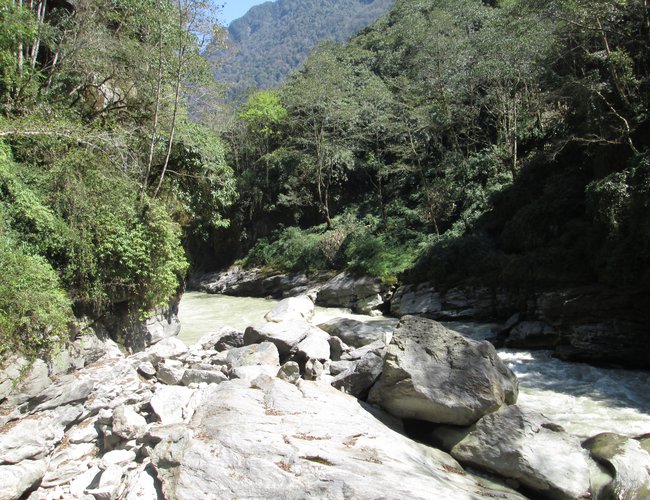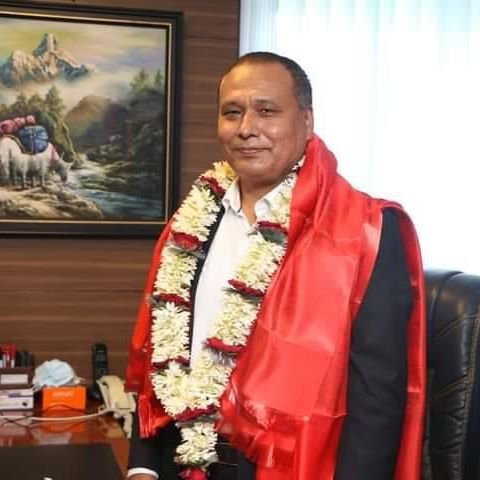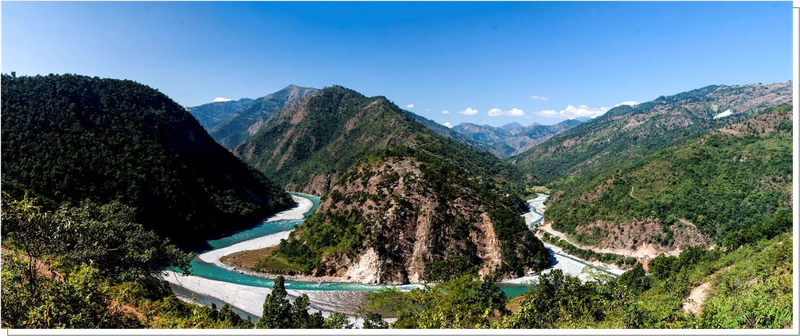
Just a few weeks after resuming his second tenures as a Managing Director of Nepal Electricity Authority (NEA), Kul Man Ghising has started to implement plans for sustained, uninterrupted and qualitative electricity supply.
As Nepal’s power system is based on of run-off-the –river plants, there are seasonal variations in a generation. With an abundance of water, run-off-the-river plants generate electricity at full capacity. However, they produce just 20-25 percent of their capacity during dry seasons resulting in huge gaps in the supply system.
Tired of frequent power cuts without notices in the last year, consumers have been demanding to have quality and uninterrupted power supply. Rejoined NEA as an MD for the second tenure, Ghising has already announced that his focus in this tenure is to provide quality and regular electricity supply to the consumers.

MD Ghising is well aware of the fact that the construction of a few big reservoir projects is a prerequisite to this. Thus, NEA has decided to push the construction of the reservoir and semi-reservoir hydropower projects giving priority.
The projects include 835 MW Dhudhkosi Storage Hydropower Project, 1061 MW Upper Arun semi-storage Hydropower Project and 210 MW Chainpur Hydropower Projects. All these three projects are now at the final stage of the Detail Project Study Report.
MD Ghising said that the NEA is currently working to complete Detail Project Study Report, preparing documents for pretenders of contractors, construction of access roads, land acquisition, He said NEA has already started discussions with national and international bilateral and multilateral financing agencies for financial management in parallel.
MD Ghising said that NEA is pushing the reservoir and semi-reservoir projects to make a balance between supply and demand and export remaining electricity in remaining countries. “We have been doing homework focusing to start the projects within a year,” said MD Ghisinig.
"The construction of reservoir-based and semi-reservoir-based projects are given high priority to balance the daily and seasonal demand and supply, and export of surplus electricity to neighboring countries," Ghising said. "We are working hard to complete all the preconstruction works within a year and begin their construction works shortly after."
Ghising said discussions were underway with the European Investment Bank (EIB), Asian Infrastructure Investment Bank (AIIB) and the Korean Exim Bank for investment in the Dudhkoshi, bankrolled by the Asian Development Bank (ADB) through the Ministry of Finance. "We will raise money by issuing shares to the general public under Nepal's Water, People's Investment program implemented by the government. The return from the project will reach the citizen level," he said.
The investment for Upper Arun and Chainpur Seti will be mobilized by issuing shares to the general public through the program. The estimated base cost of Dudhkoshi is US$ 1.53 billion (approximately Rs. 178 billion) and the total cost, including interest for the construction period and taxes, is estimated at around US$ 2 billion. Among the studied reservoir projects, Dudhkoshi is considered to be relatively cheap and attractive in terms of cost and energy production.
The study has shown that out of 3.44 billion units of energy generated annually from the projects which fall in Khotang, Okhaldhunga and Solukhumbu districts, 1.36 billion and 2.8 billion units of energy will be generated in the winter and the rainy season respectively. The project has already issued a public notice for the construction of access road and acquisition of about 13,000 ropanis of land in Khotang in the flooded area above the dam construction site.
The process of land acquisition in Okhaldhunga and Solukhumbu will start soon. The construction of the project is estimated to take seven years. The generated electricity will be connected to the national grid through the proposed Sunkoshi-Dhalkebar 400 kV transmission line. Ghising said that the semi-reservoir Upper Arun would be given high priority and would be promoted as a 'game changer' project.
Under the People's Hydropower Program, the four-digit capacity of the project (1061 MW) and the largest ever project being constructed by the NEA, the public will have 49 per cent of the total share, concessional loan of financial institutions such as World Bank and European Investment Bank a

nd investment from domestic financial instructional, Employees Provident Fund, Citizens Investment Fund.
The federal, provincial and local governments will also invest in the project. The estimated cost of the project is about 1.2 billion excluding interest during the construction period. NEA plans to raise 30 percent of the total cost from equity and 70 percent from loans.
The project will generate 4.53 billion units of energy annually. NEA has moved ahead with the 30 MW Ikhuwa Hydropower Project to be a part of Upper Arun.
Chainpur Seti in Bajhang will be promoted as a game-changer project in the far western region. The federal, provincial and local governments, the project affected and the general public across the country will invest in the project to be constructed under the People's Hydropower Program.
Tender documents are being prepared for the construction of the project in engineering, procurement and construction (EPC) model, construction of access road, land acquisition and other works.
- The Sentiment Of Monetary Policy Seems Focused On Increasing Eemand: FNCCI President Chandra Prasad Dhakal
- Jul 26, 2024
- Monetary Policy 081/82 Is Making The Economy More Dynamic: Governor Adhikari
- Jul 26, 2024
- Global IME Bank And Shashila Motors Signed Agreement Regarding Electric Vehicle loan
- Jul 26, 2024
- Lok Bahadur Thapa, permanent representative of the UN in New York, was appointed as the Vice President of ECOSOC
- Jul 26, 2024
- Leeladevi Gadtaula Became The First woman Chief Secretary
- Jul 26, 2024
















